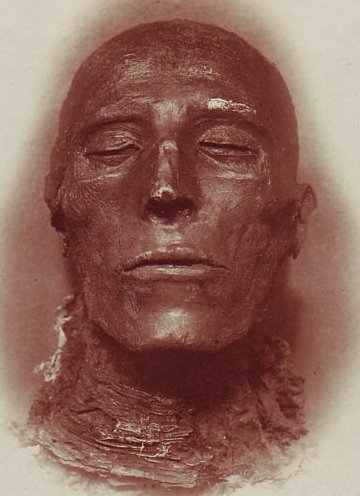
The transformation of literary genres in the early twentieth century was marked by a series of intriguing parallels and recurrences. When Raymond Chandler, displaced as much in England as California, started down the mean streets of writing pulp fiction, he used an Erle Stanley Gardner story as his template. Chandler prepared a detailed synopsis of Gardner’s story and then re-wrote the story himself, comparing the results to the original. Chandler’s first published pulp story, “Blackmailers Don’t Shoot” (1933) introduced the prototype for the hardboiled private eye who emerged six years later in Chandler’s landmark first novel, The Big Sleep in the form of Philip Marlowe. Likewise Chandler’s literary heir, Ross Macdonald, displaced as much in Canada as California, would use The Big Sleep as the template for his own first novel, The Moving Target (1949) and, in the process, introduced Marlowe’s successor, Lew Archer who would arguably represent the hardboiled detective realized to its full potential.
When Robert E. Howard, an outcast in his native Cross Plains, started down the path that would eventually give the world the genre now known as Sword & Sorcery, he used Paul L. Anderson’s story, “En-ro of the Ta-an” as the template for his various “Am-ra of the Ta-an” story drafts. Anderson would likely be a completely forgotten literary figure but for the efforts of Howard scholar, Rusty Burke. Even without Anderson as a reference point, Howard’s first attempts at creating a noble savage are instantly familiar to the modern reader as being works that are highly derivative of Edgar Rice Burroughs’ Tarzan, Pellucidar and Caspak novels. Just as the seminal Black Mask writers took the western and successfully brought it to an urban setting creating modern detective fiction in the process, so Burroughs and those he influenced took Rudyard Kipling’s Mowgli tales and laid the foundation for modern myth-making by cross-breeding jungle adventures with the lost worlds tales of Jules Verne, Sir Arthur Conan Doyle, and H. Rider Haggard.
Howard’s early efforts with Am-ra distinguish themselves from mere imitation by their vivid and, at times, poetic descriptions of primitive life in all its terrible beauty. The Ta-an fragments culminate in the posthumously published story, “Exile of Atlantis” in which Am-ra is supplanted by Kull, originally conceived as a supporting character. This subconscious usurping of the central role is foreshadowed by the introduction of the character of Gaur who dogs Am-ra’s footsteps in an early formation of the storyline as an epic poem. Just as Howard’s Am-ra followed Anderson’s En-ro so Gaur (as Kull) was destined to overtake Am-ra. Perhaps in recognition of this transference, Howard would contrive for Kull to usurp the throne of Valusia. More significantly, Howard later rewrote the Kull story, “By This Axe I Rule!” as “The Phoenix on the Sword.” It is this rewritten version that introduces the character who will successfully establish the new fantasy sub-genre as Conan usurps the throne of Aquilonia and fills Kull’s sandals (and thereby fulfills Kull’s promise) as the noble savage turned king.
The parallels do not begin and end with usurpers in these early works, there is also Howard’s recurring theme of mercy killings. By far the most vivid scene in “Exile of Atlantis” is the climactic moment that decides Kull’s fate. He spies a nubile young woman being prepared for execution for marrying outside her tribe. Knowing he cannot save her life and wishing to spare her a more painful death, Kull hurls a dagger through her heart in an act of mercy that the victim herself welcomes. This act seals Kull’s fate and makes him an outcast among his own people. Interestingly, it is Am-ra who now follows Kull’s example just as Kull’s predecessor, Gaur once followed Am-ra’s example in the early Ta-an fragments. A similar action on the part of the hero can be found in the early Conan story, “The Tower of the Elephant” where Conan will likewise mercifully take the life of Yag-kosha, the elephant man to release him from his unending misery. This recurring theme of mercy killing is one that Howard himself would embrace when he ended his own life in the face of his mother’s death.
Howard’s suicide seems inevitable in light of the world-view contained in his stories. His fiction, like Chandler and Macdonald, is the work of the eternal outsider. The tragedy in Howard’s case is that his exile was only temporal and not physical. Had he left Cross Plains behind as his idealized selves, Kull and Conan had done with Atlantis and Cimmeria, he might have recognized that the unbearable loss of his mother would heal by gradations and unlike the nameless victim of small-minded prejudice in “Exile of Atlantis” or poor crippled Yag-kosha trapped in a cruel, unforgiving world in “The Tower of the Elephant,” Howard could and should have escaped the pain of his childhood home and learned to live a richer, fuller life where his gift for depicting the world in all its splendor and wanton savagery might have given him the peace and acceptance that he hungered for, but was denied in the twelve short years he gave himself as a writer. Clinical depression and creativity often walk the same path. Howard’s talent outlived him, but his own hour of the dragon concluded not with a noble mercy killing, but rather a tired resignation from one who fought a solitary war against a world he feared to conquer.


.jpg)
No comments:
Post a Comment